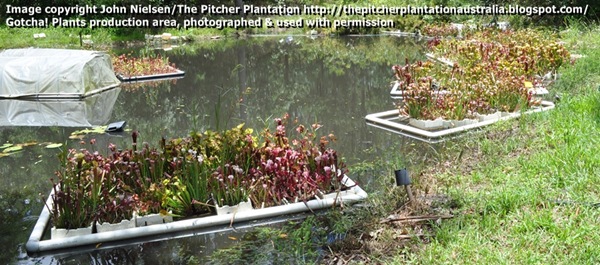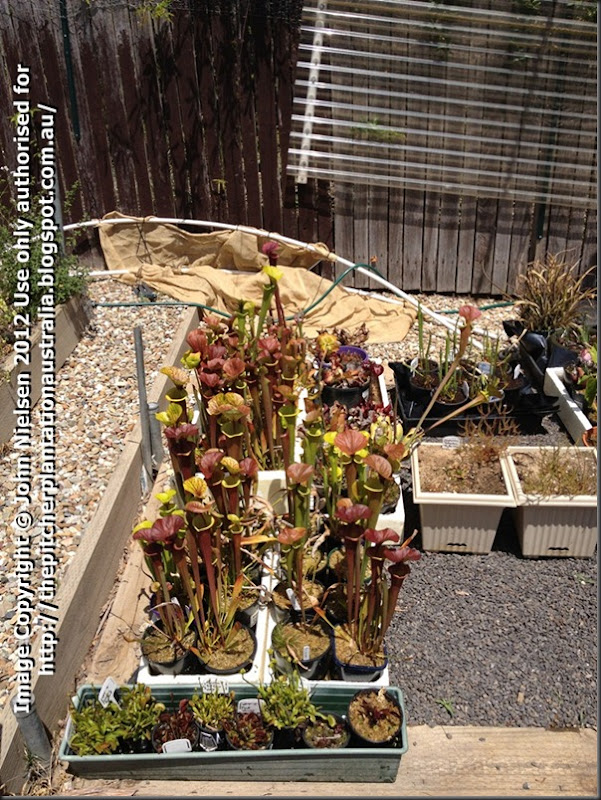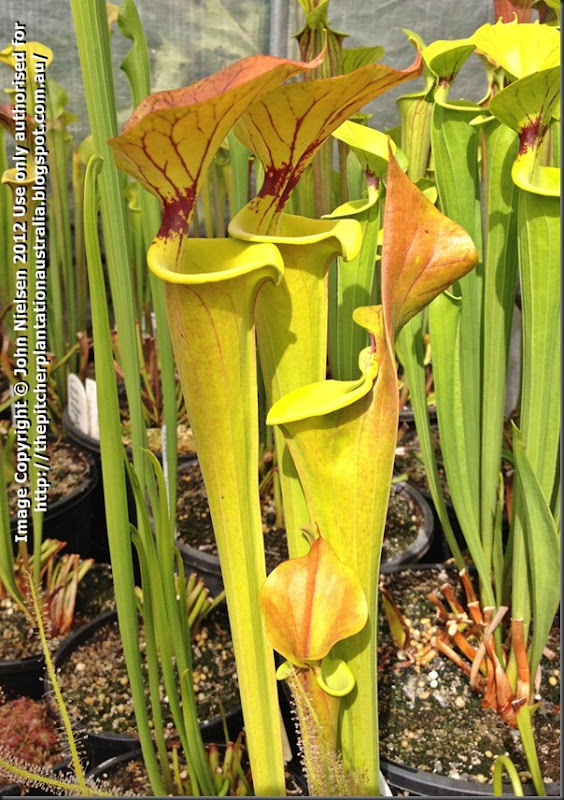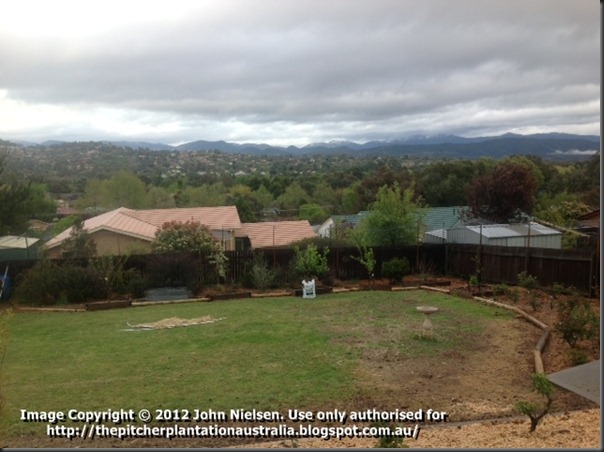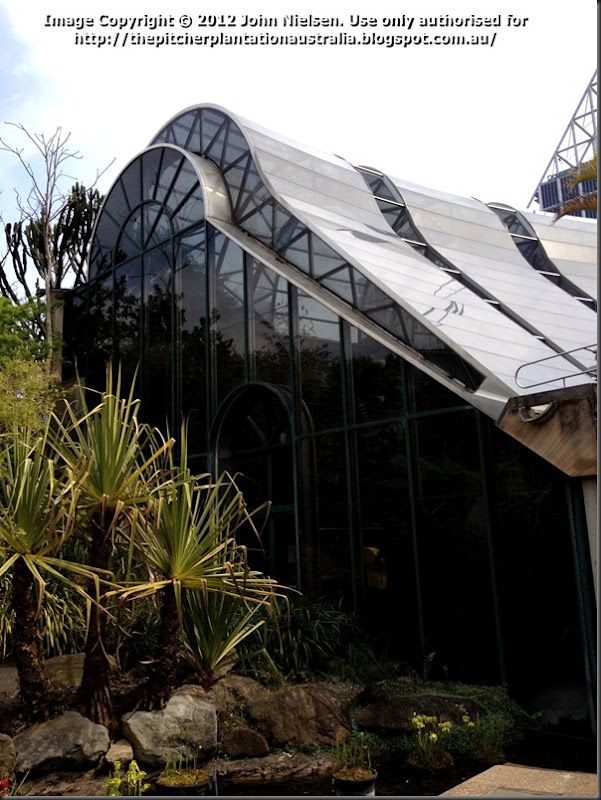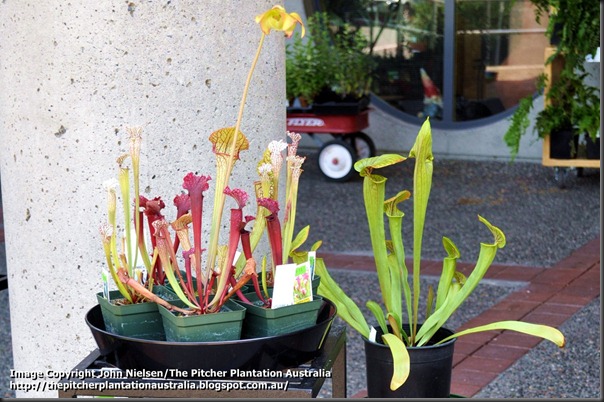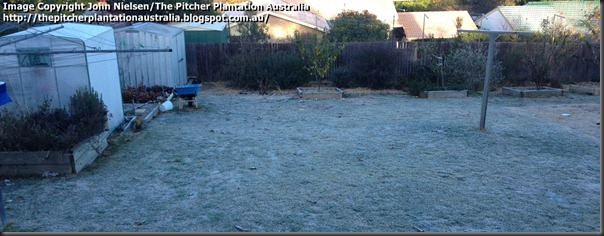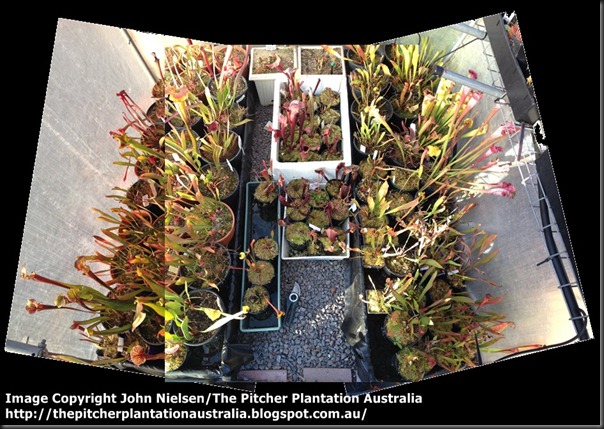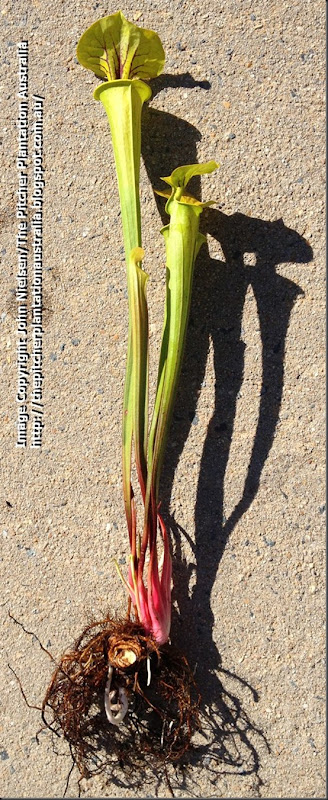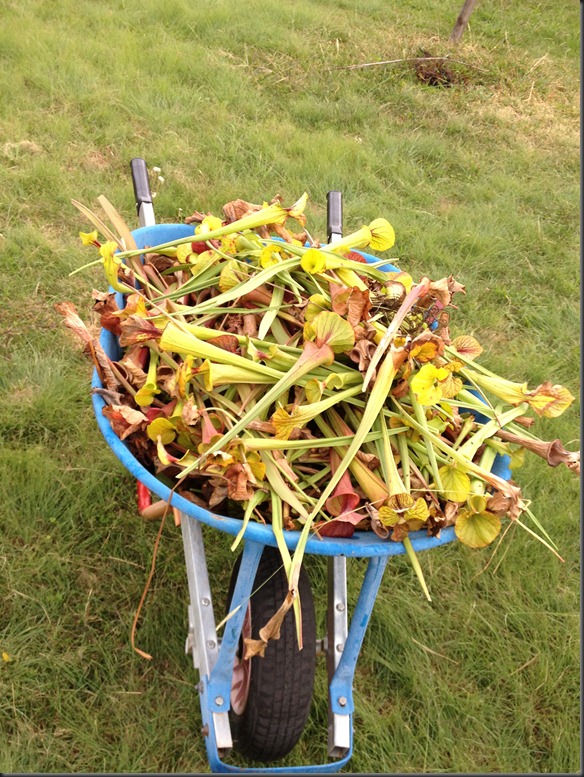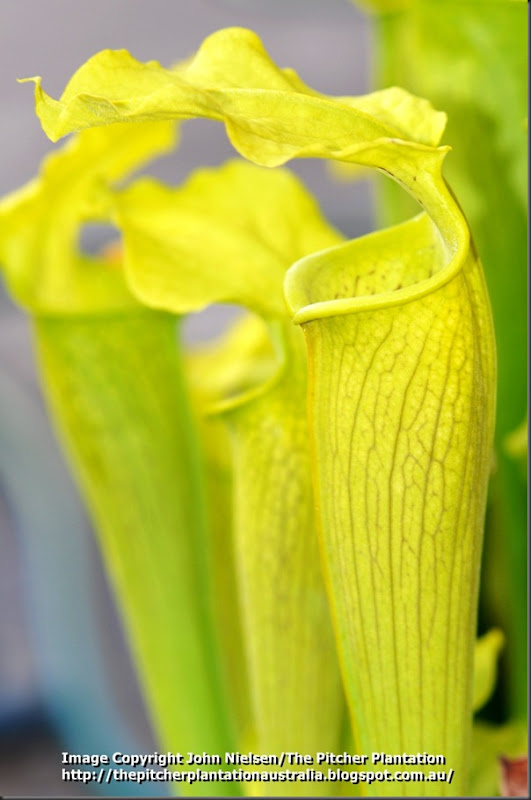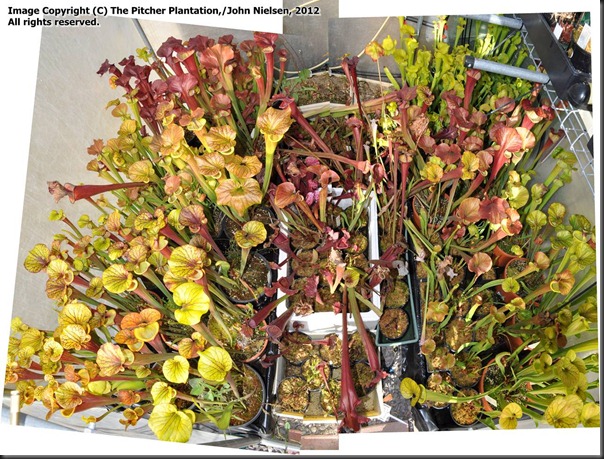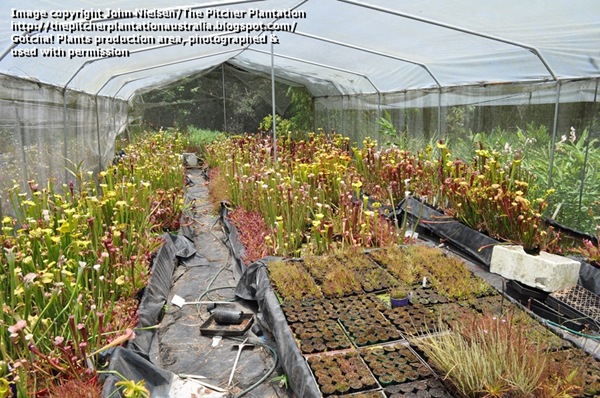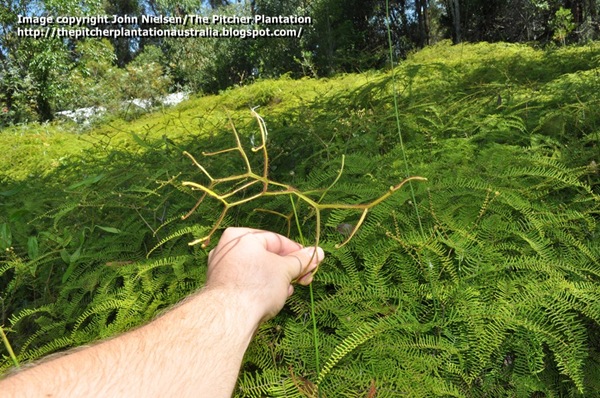This half of the Gotcha! Plants review focuses on the collection of the former CP nursery Fly Free Zone.
Fly Free Zone was a CP nursery run by David and Felicity Martin. They went commercial around 1994, but David had been growing
Sarracenia, Nepenthes and
Dionaea for some 20 years before that. And when I say growing, I mean he started off with different species that he grew from seed (mostly from the late Fred Howell) and started crossing them to produce hybrids. He then selected the best, based on their colour and vigour. These things truly set David’s plants apart – the colours of his hybrids are breathtaking and his plants tend to form nice, compact rhizomes and strongly clumped plants. They are near-perfect in cultivation – their compact growth means you can have a large variety of plants in a relatively small space. I have been growing these plants since they appeared in 1994. Sadly, David & Felicity closed up shop last year and moved north, with the
Sarracenia going to Gotcha! Plants. I was fortunate to receive a lot of his
S. flava, some of which were started from seed in 1979!
